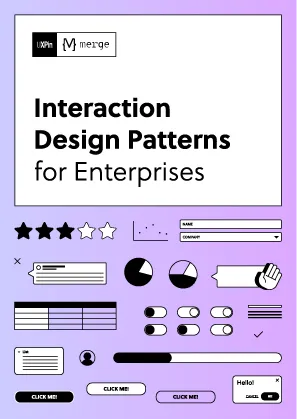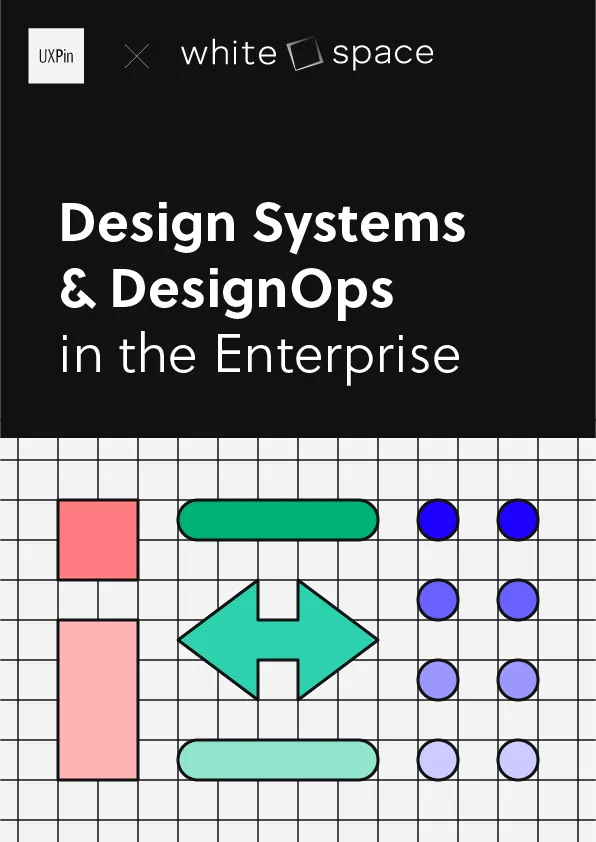AI is transforming UI design by automating repetitive tasks, speeding up workflows, and enhancing team collaboration. Tools like Figma, Adobe Firefly, and UXPin are helping designers save time and improve efficiency. For example, Figma users report 40% faster prototype creation, while Adobe Firefly boosts productivity by 73% through AI-generated assets. However, challenges like AI bias, integration issues, and maintaining creativity remain. Key takeaways:
- Top Tools: Figma (text-to-design, layer organization), Adobe Firefly (vector graphics, textures), UXPin (developer handoffs, AI suggestions).
- Benefits: Faster wireframes, automated prototypes, and improved collaboration.
- Limitations: AI bias, tool integration problems, and over-reliance on automation.
- Future Trends: Emotion-based interfaces, advanced 3D design, and automated design systems.
AI is a powerful ally for designers, but human creativity remains essential. Combining AI speed with strategic thinking is the way forward.
Exploring Adobe Firefly – An AI Tool for UI Design
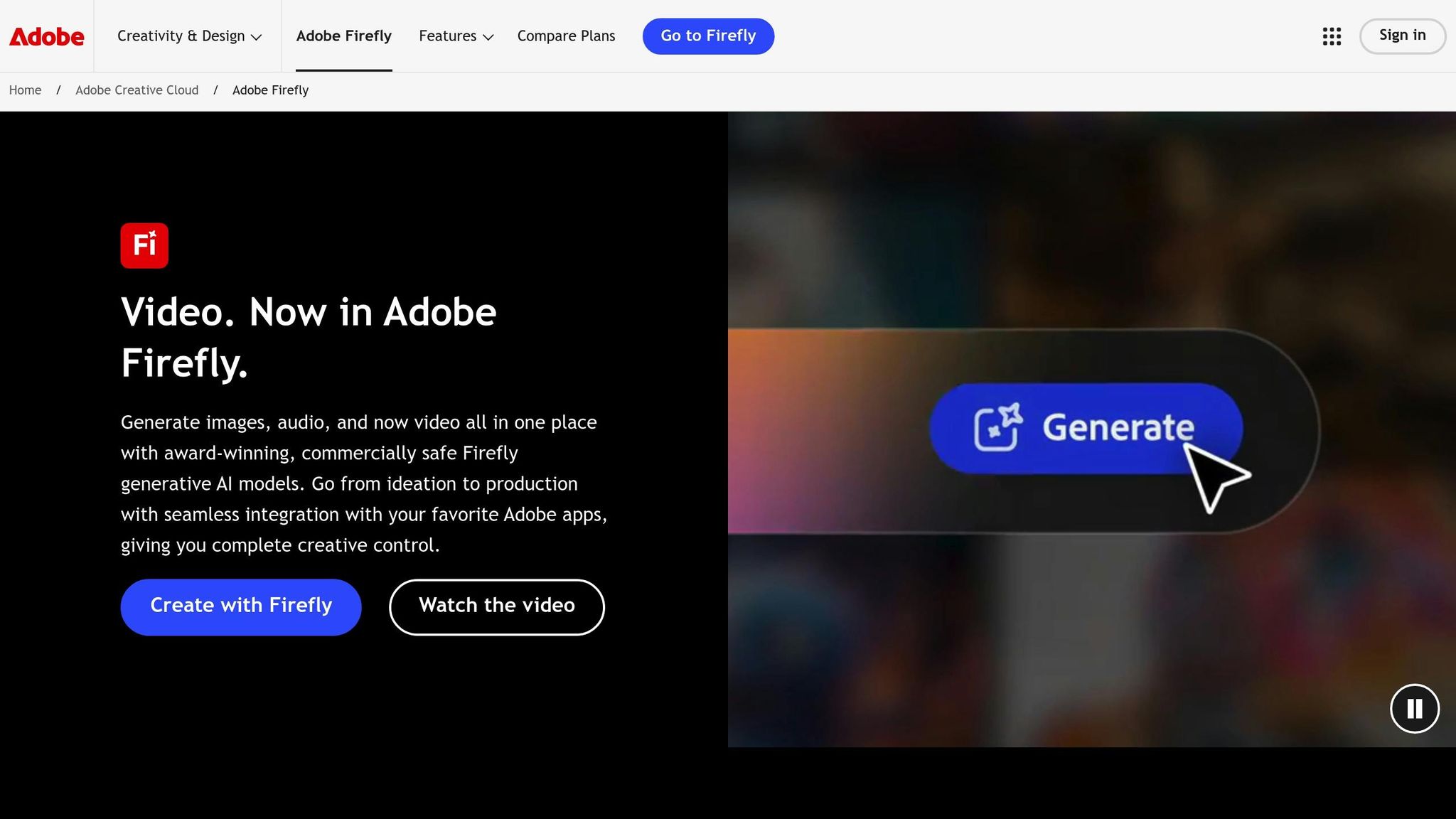
Top AI Design Tools
AI is transforming design workflows, making processes faster and more efficient. Here’s how some of the top tools are changing the game:
Figma AI Features
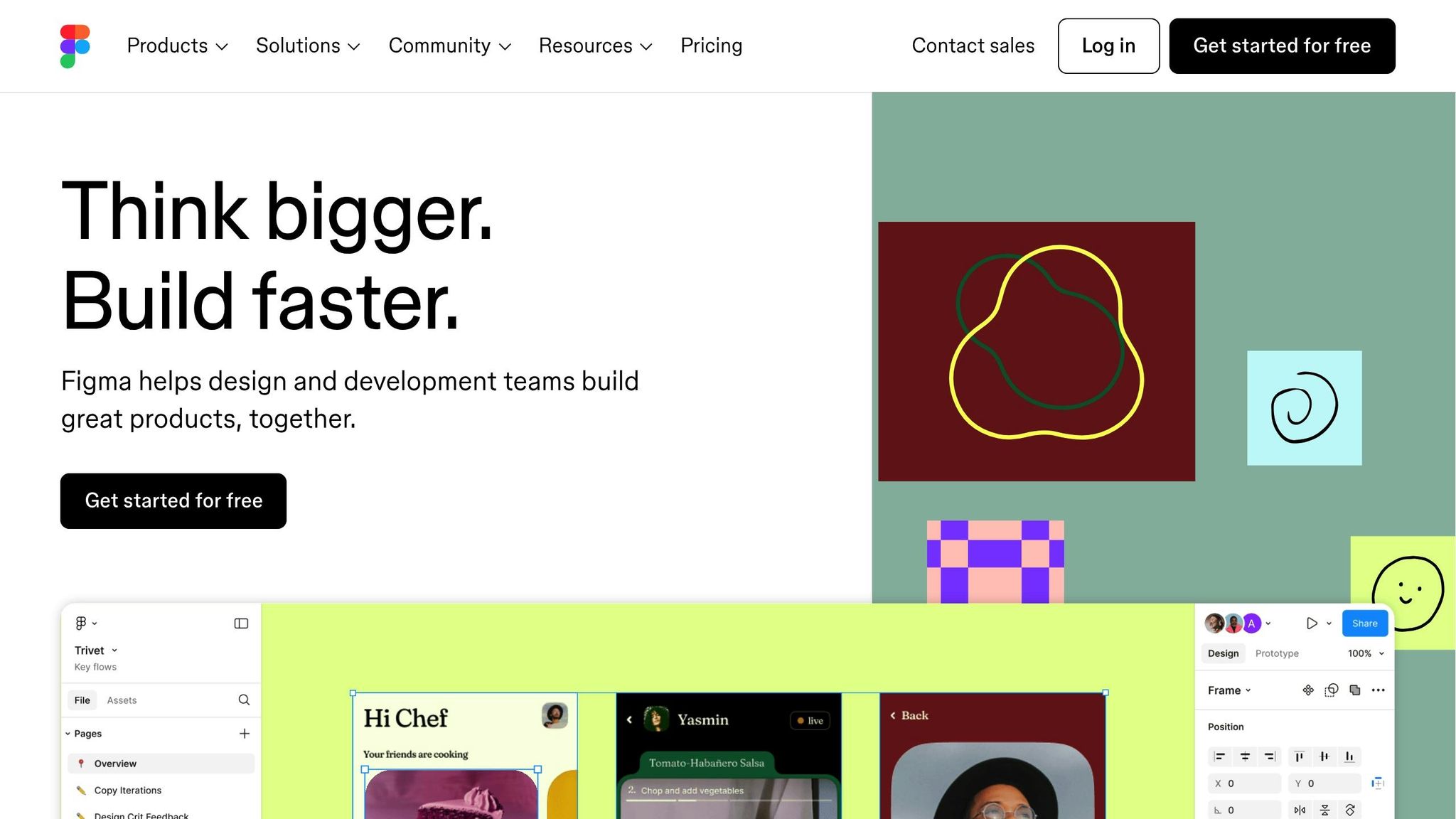
Figma’s AI tools simplify prototyping by turning text into layouts and managing components intelligently. For example, OneSignal‘s team cut project timelines by 15% by using features like automated layer organization and visual search to maintain design consistency.
Here’s what Figma offers:
- Text-to-design conversion: Quickly create UI layouts from written input.
- Automated layer organization: Rename and organize layers without manual effort.
- Component duplication: Context-aware duplication for faster design iterations.
- Visual search: Find matching components with ease.
These tools streamline layout creation and improve team collaboration.
Adobe Firefly for UI Elements
Adobe Firefly focuses on creating design assets with AI, making it a go-to for generating visuals efficiently.
Key features include:
- Generative vector graphics and 3D textures: Create assets from text prompts.
- Pattern recoloring: Quickly adjust patterns to fit your design needs.
- Background creation: Produce custom backgrounds instantly.
UXPin Merge Features
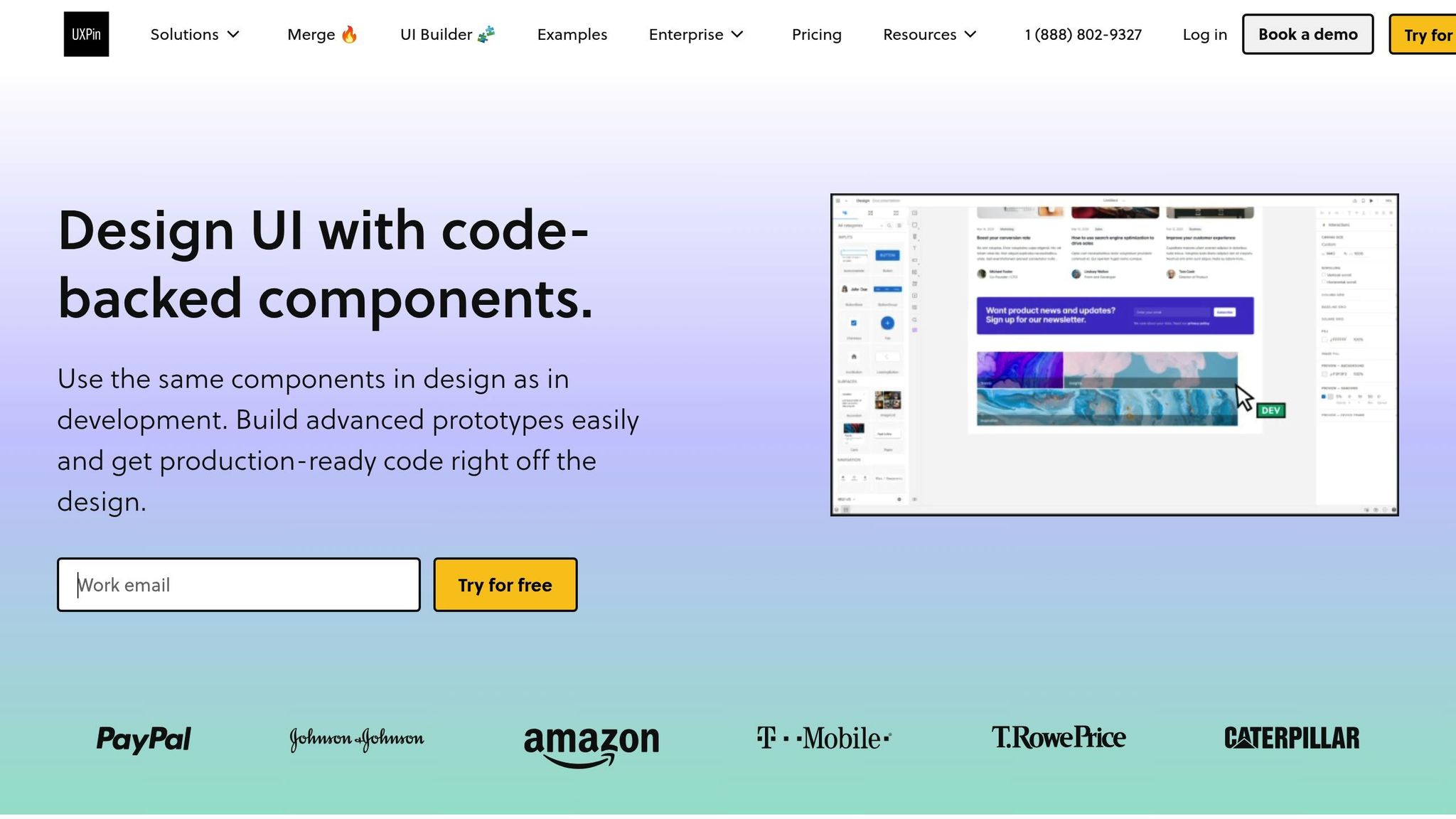
While Figma and Adobe emphasize visual design, UXPin stands out by bridging the gap between design and development.
UXPin Merge offers features that make prototypes development-ready and integrate seamlessly with coding workflows. It even suggests improvements for component libraries based on context.
| Feature | Benefit |
|---|---|
| React component integration | Speeds up handoffs to developers |
| AI component suggestions | Enhances system consistency |
| Framework libraries | Adapts easily to team needs |
These tools collectively push design processes to new levels of efficiency and precision.
AI in Design Processes
AI tools are now speeding up key stages of the design process, making workflows smoother and more efficient.
Faster Wireframes and Prototypes
Tools like Uizard can convert sketches into wireframes, cutting concepting time by 40-60%. This allows teams to explore more design ideas without sacrificing quality.
"The Figma AI-assisted layout generator transformed our workflow completely. We went from spending 2 weeks on initial wireframing to just 3 days for our major app redesign. This allowed us to explore 75% more design variations, ultimately leading to a 22% increase in user engagement after launch." – Emily Chen, Senior Product Designer at Airbnb
AI-Generated Design Assets
Creating visual elements has become much quicker with AI. For example, Adobe Firefly’s Text to Texture feature reduces texture creation time by 55%, ensuring designs stay consistent with brand guidelines.
| Asset Type | Time Saved | Key Benefit |
|---|---|---|
| Textures | 55% | Brand-aligned variations |
| Color Palettes | 75% | AI-powered harmony matching |
| Icons & Illustrations | 60% | Cross-platform consistency |
Team Collaboration with AI
AI is also changing how teams work together. Tools like FigJam AI use sentiment analysis to sort through stakeholder feedback and prioritize actionable items. Adobe case studies show this has cut review cycles by 35%.
These AI-driven workflows bring several advantages:
- Faster testing of design variations
- Consistency across projects
- Simplified feedback handling
- Less reliance on manual tasks
While these improvements are game-changing, designers still need to account for AI’s current limitations.
sbb-itb-f6354c6
AI Design Tool Limitations
AI design tools bring plenty of benefits, but they also come with challenges that designers need to navigate. A UXPin survey found that 62% of designers encounter issues when integrating AI tools into their workflows.
AI Output Bias
AI-generated designs often mirror the biases present in their training data. For example, the AI Now Institute reports that 80% of AI professors are men, which can shape how AI tools interpret and create design elements. These biases show up in various forms:
| Bias Type | Impact | Mitigation Strategy |
|---|---|---|
| Gender Representation | Stereotypical imagery and color choices | Use diverse datasets |
| Cultural Context | Western-centric design patterns | Implement bias detection tools |
| Accessibility | Limited focus on diverse user needs | Perform accessibility audits |
"Our team discovered that diverse review panels improved our AI outputs’ cultural sensitivity by 45%." – Dr. Sarah Chen, Head of AI Ethics at UXPin
Tool Integration Problems
AI tools often struggle to integrate smoothly with existing design systems, leading to workflow disruptions. Deloitte research shows that while AI can automate up to 30% of design tasks, compatibility issues can significantly reduce its effectiveness.
Some common integration hurdles include:
- File Format Conflicts: AI tools often lack consistent export options for traditional design software.
- Inconsistent Component Styling: AI-generated elements may not align with established design systems.
- Version Control Issues: Tracking changes across AI and non-AI tools can be challenging.
Human vs AI Design Roles
Gartner predicts that 50% of companies will face uniformity in design caused by AI by 2025. This underscores the importance of keeping humans involved in creative decisions.
The best results come from blending AI’s speed with human insight:
| Task Type | AI Role | Human Role |
|---|---|---|
| Layout Generation | Create initial options | Refine and tailor strategically |
| Color Schemes | Suggest palettes | Align with brand and emotions |
| Component Design | Rapid prototyping | Optimize for user experience |
| Design Decisions | Provide data-driven insights | Apply context and creativity |
Conclusion: Next Steps in AI Design
As designers work around the limitations of AI discussed earlier, adopting it thoughtfully is key to staying ahead in the field.
Key Takeaways for Designers
AI is fundamentally changing design workflows. For example, Adobe Firefly has already generated 18 billion assets worldwide. With the UX/UI design market expected to reach $50 billion by 2027, integrating AI tools is becoming more important than ever.
| Design Area | Current AI Impact | Future Possibilities |
|---|---|---|
| Workflow Optimization | Automates 30% of tasks | Enables advanced 3D interface creation |
| Team Collaboration | Smart duplication and naming | Automated adaptation to design systems |
| User Experience | Basic personalization | Interfaces that respond to user moods |
What’s Coming in AI Design
The next generation of AI tools will significantly change how designers work. For instance, Adobe’s Creative Cloud team expects advanced 3D interface creation to become mainstream by late 2025, allowing designers to build immersive experiences without needing deep technical skills.
Here are a few features to watch out for:
- Emotion-Based Interfaces: AI is advancing to create interfaces that adapt to users’ emotions using facial recognition and biometric data.
- Improved Natural Language Processing: Tools like UXPin’s AI Component Creator are pushing boundaries, enabling seamless text-to-design conversions. Imagine turning a client brief directly into a prototype.
- Automated Design Systems: Future AI tools will align with brand guidelines automatically, saving time and ensuring consistency.
As AI takes on more technical tasks, designers should prioritize honing their strategic thinking and creative problem-solving skills. This shift underscores the importance of collaboration between humans and AI to drive innovation in design.
FAQs
As the use of AI in design grows, these questions often come up:
What are the top AI tools for UI design?
Some standout tools for 2025 include Galileo AI for turning text into wireframes and Uizard for recognizing sketches. These tools are reshaping the early stages of design. For instance, Uizard can cut design time by up to 70% by transforming hand-drawn sketches into digital wireframes.
Here’s a quick breakdown of popular tools and their strengths:
- Galileo AI: Converts text descriptions into detailed wireframes.
- Uizard: Excellent for quick prototyping and sketch-to-digital transformations.
- Adobe Firefly: Focused on generating and editing design assets.
- UXPin: Helps streamline workflows between design and development.
Can AI create UI designs?
Yes, today’s AI tools can generate UI designs based on text prompts. For example, Galileo AI produces editable, high-quality wireframes by applying design principles and aligning with brand guidelines.
However, while AI can handle many tasks efficiently, human input is still essential. To get the best results, designers should:
- Treat AI-generated designs as starting points.
- Refine designs using their own expertise.
- Test with users to ensure functionality and appeal.
The key is combining AI’s speed with human creativity to deliver polished, effective designs.
